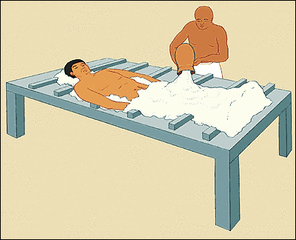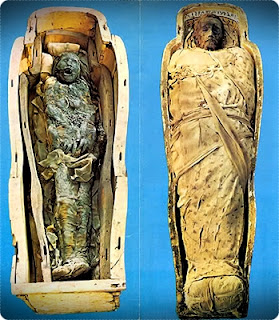

Mummification not only serves as an enlightening look into the spiritual landscape of ancient Egypt, it offers a glimpse into the culture’s understanding of science. Know Your Natron – In ancient Egypt, highly skilled embalmer-priests mummified corpses, seeking to preserve the human body in a lifelike form for as long as possible in order to help the departed on his journey through the afterlife. The total process could take up to 40 days. Resin was used to glue the layers of wrap together. They would use many layers of strips of linen wrapping, covering the entire body. Once it was dry, they would use lotions on the skin to preserve it, reinforce the empty body with packing, and then cover the body in wraps of linen. With the body covered and stuffed with natron, they would let the body dry out for around 40 days.

They would also take out some of the organs.

The natron would help to dry out the body. Want more Saturday Science? See all of our at-home activities on the blog or on Pinterest.The Egyptians started out by covering the body with a salty crystal substance called natron. When you remove water and microbes from the picture, mummies bodies’ don’t decompose. It also has anti-microbial properties, which means it kills bacteria and fungi. Salt is a desiccant, which is a chemical that removes water from things. The Egyptians would dry their mummies with Natron in windy tents in the dry desert air for 40 days before wrapping them for their final burial. Natron, which was used in ancient Egypt to preserve mummies, is a natural salt mixture containing sodium carbonate decahydrate (soda ash), sodium bicarbonate (baking soda), sodium chloride (table salt), and another salt called sodium sulfate. Which salt mixture keeps the apples from smelling bad?


 0 kommentar(er)
0 kommentar(er)
